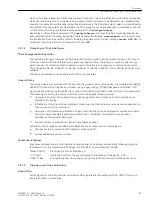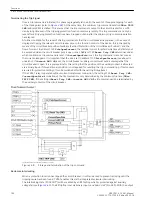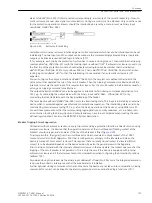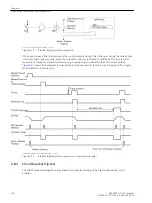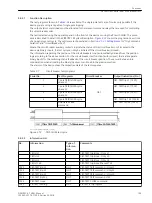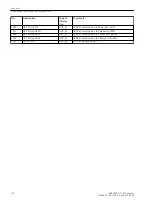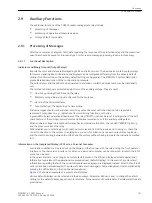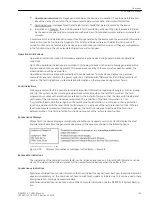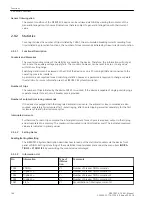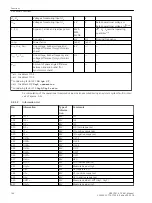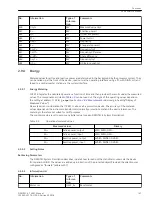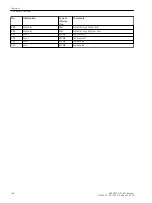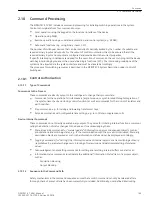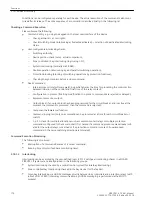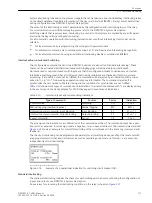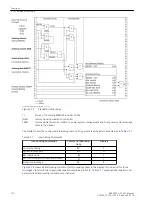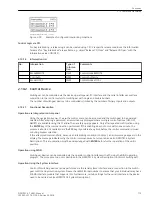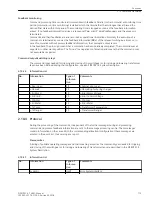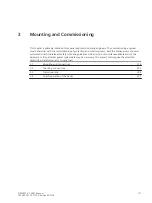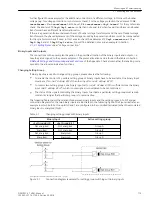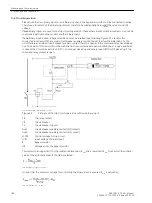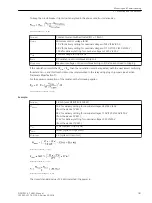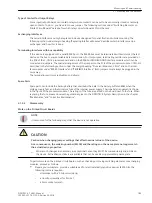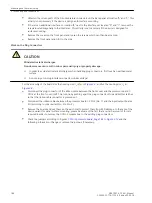
Command Processing
The SIPROTEC 4 7VK61 includes a command processing for initiating switching operations in the system.
Control can originate from four command sources:
•
Local operation using the keypad on the local user interface of the device,
•
Operation using DIGSI,
•
Remote operation using a substation automation and control system (e.g. SICAM),
•
Automatic functions (e.g. using binary inputs, CFC).
The number of switchgear devices that can be controlled is basically limited by the number of available and
required binary inputs and outputs. For the output of control commands it has to be ensured that all the
required binary inputs and outputs are configured and provided with the correct properties.
If specific interlocking conditions are needed for the execution of commands, the user can program the device
with bay interlocking by means of the user-defined logic functions (CFC). The interlocking conditions of the
system can be injected via the system interface and must be allocated accordingly.
The procedure for switching resources is described in the SIPROTEC 4 System Description under Control of
Switchgear.
Control Authorization
Type of Commands
Commands to the Process
These commands are directly output to the switchgear to change their process state:
•
Commands for the operation of circuit breakers (asynchronous; or synchronized through integration of
the synchronism check and closing control function) as well as commands for the control of isolators and
earth switches.
•
Step commands, e.g. for raising and lowering transformer taps,
•
Setpoint commands with configurable time settings, e.g. to control arc-suppression coils.
Device-internal Commands
These commands do not directly operate binary outputs. They serve for initiating internal functions, communi-
cating the detection of status changes to the device or for acknowledging them.
•
Manual override commands for “manual update”of information on process-dependent objects such as
annunciations and switching states, e.g. if the communication with the process is interrupted. Manually
overridden objects are marked as such in the information status and can be displayed accordingly.
•
Tagging commands (for “setting”) the information value of internal objects, such as switching authority
(remote/local), parameter changeovers, blocking of transmission and deletion/presetting of metered
values.
•
Acknowledgment and resetting commands for setting and resetting internal buffers or data stocks.
•
Information status commands to set/delete the additional “Information Status” item of a process object,
such as
–
Acquisition blocking,
–
Output blocking.
Sequence in the Command Path
Safety mechanisms in the command sequence ensure that a switch command can only be released after a
thorough check of preset criteria has been successfully concluded. Additionally, user-defined interlocking
2.10
2.10.1
2.10.1.1
2.10.1.2
Functions
2.10 Command Processing
SIPROTEC 4, 7VK61, Manual
169
C53000-G1176-C159-5, Edition 05.2018
Summary of Contents for SIPROTEC 4 7VK61
Page 8: ...8 SIPROTEC 4 7VK61 Manual C53000 G1176 C159 5 Edition 05 2018 ...
Page 10: ...10 SIPROTEC 4 7VK61 Manual C53000 G1176 C159 5 Edition 05 2018 ...
Page 16: ...16 SIPROTEC 4 7VK61 Manual C53000 G1176 C159 5 Edition 05 2018 ...
Page 176: ...176 SIPROTEC 4 7VK61 Manual C53000 G1176 C159 5 Edition 05 2018 ...
Page 224: ...224 SIPROTEC 4 7VK61 Manual C53000 G1176 C159 5 Edition 05 2018 ...
Page 264: ...264 SIPROTEC 4 7VK61 Manual C53000 G1176 C159 5 Edition 05 2018 ...
Page 270: ...270 SIPROTEC 4 7VK61 Manual C53000 G1176 C159 5 Edition 05 2018 ...
Page 276: ...276 SIPROTEC 4 7VK61 Manual C53000 G1176 C159 5 Edition 05 2018 ...
Page 346: ...346 SIPROTEC 4 7VK61 Manual C53000 G1176 C159 5 Edition 05 2018 ...

